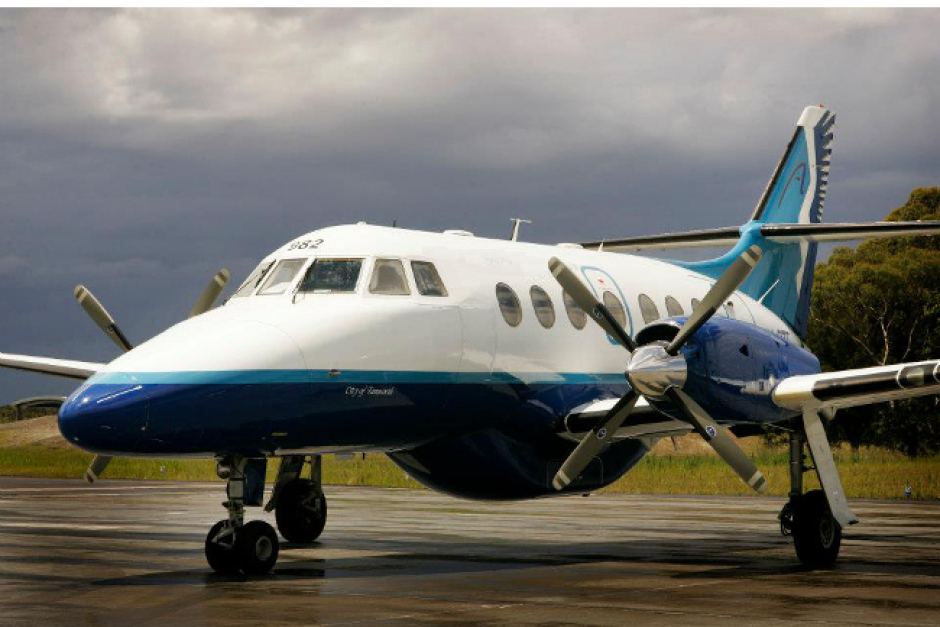Category: Air and Space / Air Transport
Emergency landing prompts safety reminder for pilots
09:04 UTC+8 April 28, 2017 | Penny Evans And Liz Farquhar

A FlyPelican flight from Newcastle to Dubbo lands safely after an engine problem forced a mid-air shutdown. (Supplied: FlyPelican)
Australia's transport safety watchdog is urging pilots to be clear about what constitutes a mayday situation, after a plane got into trouble near the NSW city of Newcastle and made no emergency call.
The FlyPelican plane was flying from Newcastle to Dubbo just after 7:30am on December 14, 2016, carrying two crew and six passengers.
 Photo:
Damaged pieces inside a fuel control unit of a Fly Pelican passenger plane that was forced to turn back to Newcastle airport in December 2016. (Australian Transport Safety Bureau)
Photo:
Damaged pieces inside a fuel control unit of a Fly Pelican passenger plane that was forced to turn back to Newcastle airport in December 2016. (Australian Transport Safety Bureau)
The pilot noticed an engineering issue about 60 kilometres from Newcastle airport and decided to shut down one engine as a precaution.
The crew advised the air controller of their situation and requested clearance to return to Newcastle.
They were given clearance to return and descend, and airport emergency services were requested to be on standby.
The plane returned safely to the airport at Williamtown.
An Australian Transport Safety Bureau (ATSB) report into the incident has blamed the engine problem on a faulty bearing in the fuel control unit.
Aircraft maintenance personnel inspected the right engine after the flight and an examination of the fuel control unit found the bearing cage that separates the bearings was broken, with many small fragments interfering with the operation of the unit.
Its report found the aircraft had been in storage from 2007 until March 2016, but had undergone a major maintenance operation and had been in service for 11 days.
The ATSB report stated it was the captain's first attempt at landing with an inoperative engine, outside of a training flight, and all went smoothly.
ATSB emergency call reminder
The regulator has used the incident to remind pilots of the difference between requesting a 'mayday' or a 'pan pan' based on the severity of the situation, so air controllers can prioritise the aircraft for landing and provide appropriate support and emergency services.
Airservices Australia defines the two levels of emergency notifications as:
MAYDAY: My aircraft and its occupants are threatened by grave and imminent danger and/or I require immediate assistance.
PAN PAN: I have an urgent message to transmit concerning the safety of my aircraft or other vehicle or of some person on board or within sight but I do not require immediate assistance.
The safety message issued by the ATSB warns that a situation that seems relatively innocuous can deteriorate quickly.
It says hesitating or not broadcasting the situation can result in help being delayed.
The captain of the FlyPelican plane said the situation "did not appear like an emergency", so did not make a call at all.
He said, however, a pan pan call would have eliminated any uncertainty.
- About Us
- |
- Terms of Use
- |
-
 RSS
RSS - |
- Privacy Policy
- |
- Contact Us
- |
- Shanghai Call Center: 962288
- |
- Tip-off hotline: 52920043
- 沪ICP证:沪ICP备05050403号-1
- |
- 互联网新闻信息服务许可证:31120180004
- |
- 网络视听许可证:0909346
- |
- 广播电视节目制作许可证:沪字第354号
- |
- 增值电信业务经营许可证:沪B2-20120012
Copyright © 1999- Shanghai Daily. All rights reserved.Preferably viewed with Internet Explorer 8 or newer browsers.




 Send to Kindle
Send to Kindle